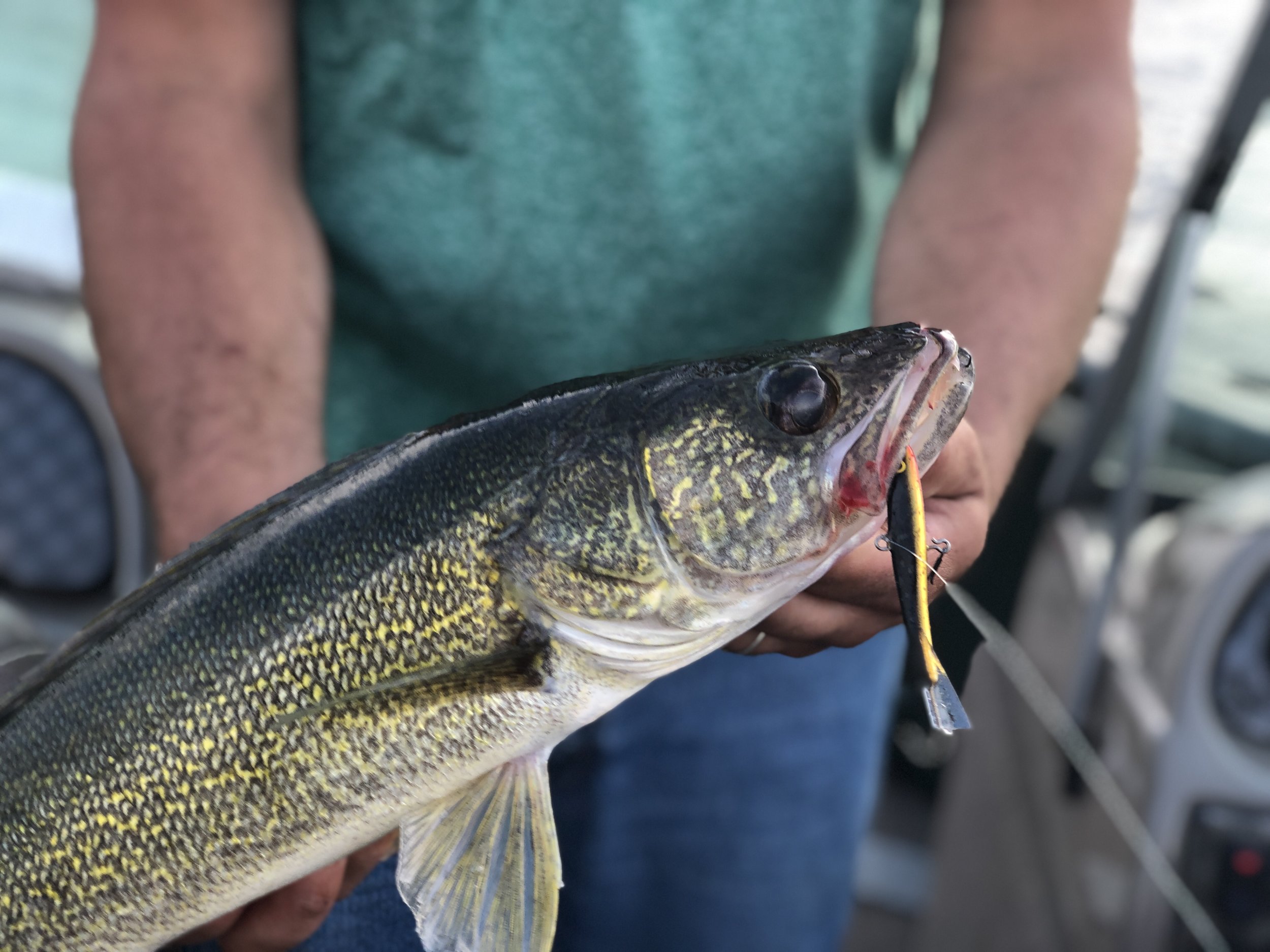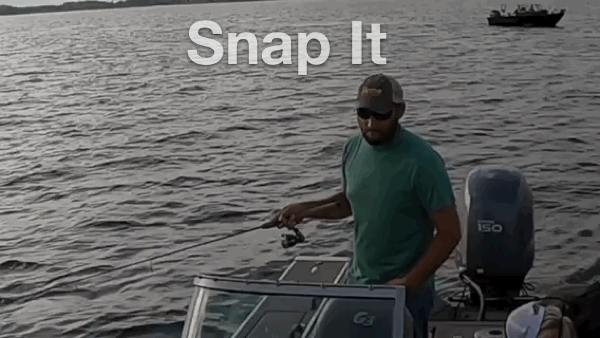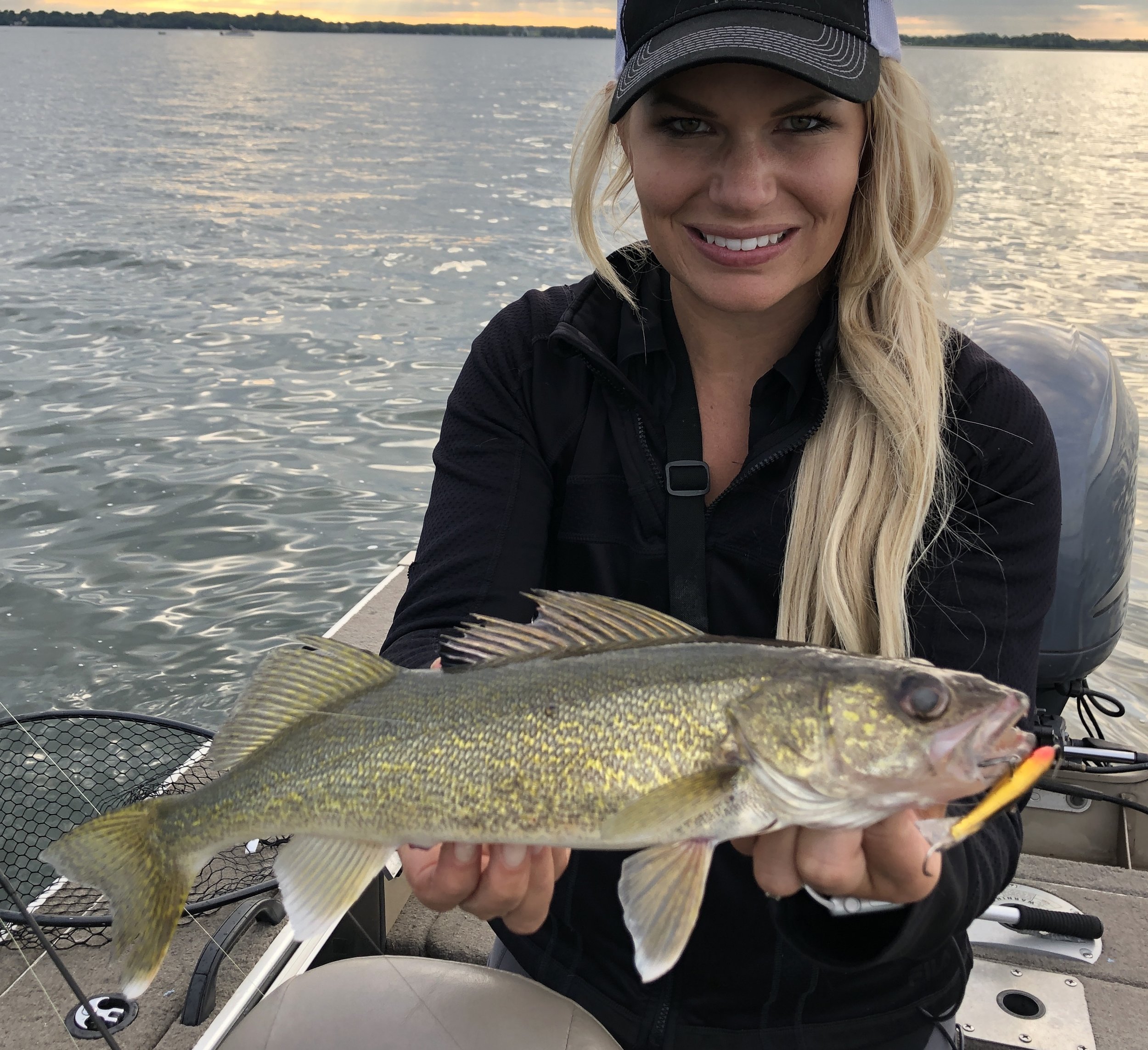If you have been fishing for any sort of time, then you’ve probably heard of the Jigging Rap. It’s a Rapala staple, well-known for its success in the ice season. However, what many anglers don’t realize is just how hot of a walleye weapon it is in the summer.
When walleye hold in the deep flats – and your jig and minnow don’t seem to do the trick – one of the best things you can do is throw on the Jigging Rap. Unfortunately, when many people buy these lures, they simply don’t know how to use them.
That’s why I’ve thrown together a quick tutorial on when, where, and how you should use the rap for success.
HOW THE JIGGING RAP WORKS
The first thing to understand is how the Jigging Rap should work. It works by swimming in aggressive patterns in front of the fish. The key here is to be very aggressive, especially in the summer when fish metabolisms run high. When this is done correctly, it produces an incredible reaction strike – one that seems to get the attention of fish both when they feed and when they don’t.
“Swimming in tantalizing circles under the ice or in open water for suspended game fish, the Jigging Rap® features a balanced, weighted minnow profile. Single reversed hooks with center treble and eyelet, this bait can also be bottom bounced, yo-yo style off the bottom with unbeatable results. Wide range of sizes is complimented with natural and glow color patterns.”
— RAPALA.COM
REACHING FISH AT ALL DEPTHS
A second benefit of the Jigging Rap is the rapid depth variability. Being able to rapidly pull (vertically) this lure throughout the water column is one of the biggest reasons it produces fish. Those individual fish that are suspended (and likely feeding) can be just as quickly and effectively reached as the pod sitting at the bottom. It’s this type of instant depth variation that is often limited when using traditional trolling and jigging techniques. With the Jigging Rap, it’s all-in-one.
WHEN TO USE THE JIGGING RAP

The simple fact that the Jigging Rap has been successfully utilized in the heart of summer and under the ice means there isn’t really a bad time to try it. It’s just that not every situation is going to be equally successful. Just like with anything – it’s really about placement (being on top of a school of fish) and technique. If you can master both of those, then the rest is a breeze.
As for when might be the best… it’s often correlated with mid-summer and mid-winter patterns, where fish set up deep and aggression can be beneficial. However, whenever you are struggling with a bite it’s always worth a try.
As for the best structure, the Jigging Rap shine in the sand, gravel, or muddy flats. Although you could technically use them under any conditions, the intensity of the snap can make them easily snagged in thick weeds and rock beds. Therefore if you decide to use them in these situations, you can expect to lose quite a few lures.
You may also be interested in:
THE PRESENTATION
You can grab the gold Size 9 jigging rap here (affiliate).
When we talk about presentation, we are discussing color options, size options, rod, and line. Below I am going through the significance of each one to help you make the best decision when starting out. However, it’s important to remember that this is subjective. There isn’t a “right or wrong” when it comes to fishing. Instead, there are just initial recommendations to help you start seeing success and you can refine everything from there. I find this initial understanding to be especially important with the jigging rap – because this lure really does depend on its aggressive action.
Rod & Line
Picking a rod is always subjective. However, when it comes to having a quick snap on the lure – a rod with a little bit of backbone can really help. I find that a rod with at least medium power works well. To test my preference, I took a medium light and a medium rod against one another and personally found the medium power fast action rod to work the best for me. Just remember, this is only a suggestion and you can always run the test yourself. Just make sure your movement is quick.
As for line, try to avoid line twists as this can affect the action of the lure. An easy way to do this is to use a barrel swivel and leader. We usually run 8 lb braid with a swivel and an 8 lb fluorocarbon leader attached to the lure. This eliminates line twist and also provides the benefits that both fluorocarbon and braid have.
Color
Walleye are considered twilight feeders, and therefore their eyes are “rod” dominant (rods allow for lowlight vision). This comes at the cost of “cones” or in other words – the receptors that are responsible for color.
That’s why when it comes to the importance of color, there is some skepticism about how much it matters. With the loss of light in the water column PLUS the fact that walleyes aren’t known for their ability to see color anyways, worrying about it is the last thing on the list. That’s why I recommend that you prioritize lure size, line twists, fish location, and technique first… then if you are still struggling – maybe start to consider color!
For the scope of this article, use whatever color you think works best in your particular body of water.
Picking the Jigging Rap Size
Understanding size; however, is important. When fishing in deep water in the summer, you are going to need a larger/heavier rap to assure you quickly reach the bottom, allowing the lure to have the correct presentation. A size #7 or #9 (2 3/4” and 3 1/2”) will work well in these situations. We almost always gravitate towards the 9 in mid-summer – where walleye are holding deep.
In the spring when walleye are more frequently found in the shallows, the smaller sizes will work just fine.
Whenever you fish a river with the current – I highly recommend going with the larger size #7 or #9 also, to assure your lure bounces through the column correctly.
Should you tip the jigging rap with bait? This is a question that seems to be commonly asked. Could it work with bait – sure, but I wouldn’t start that way.
There is an issue with adding weight to either end of the lure. This causes uneven weight distribution and therefore affects its action as it falls throughout the column. In my opinion, the Jigging Rap action works best without bait on either end. I highly recommend you keep your Jigging Rap clean to keep the action of the lure true to its original intention, at least at first.
JIGGING RAP TECHNIQUE

If I were to give you one word to describe the Jigging Rap technique it would be aggressive. Jigging Rap works when you are aggressive. Quick snaps and rapid movement is the key to get the bait to swim correctly.
I describe this as “one snap, two snap, three-snap” – meaning snap it once then drop it to the bottom, snap it twice then drop it to the bottom, then snap it three times throughout the column… then drop it to the bottom. That way you are varying your cadence and covering a lot of water vertically. Do all of this quickly.
The best demonstration I have is the meme and video above. It’s in the wrist and forearm to be quick – doing multiple snaps throughout the water column. Keep snapping over and over again. If you aren’t getting hits, make sure you are on a pod of fish. Just like with anything, placement is critical.
PRACTICE MAKES PERFECT

Perhaps the best thing you can do is find a school of fish and practice. If you KNOW there are fish below you; then you can play around with the lure until you make it work. This is one of the biggest benefits if you start using the rap when you are vertical jigging – you have plenty of opportunities to practice.
Next time you hit the water, try a hand at the Jigging Rap and make sure to let me know how you do!



